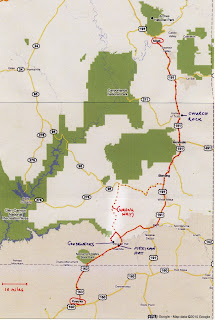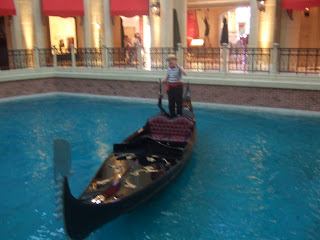
 The most prominent statigraphical layer in Monument Valley is 260 million year old Permian De Chelley Sandstone, which form the steep red cliffs that are iconic of this landscape. The buttes and mesas exist due to the hard cap rocks that cover their tops. These prevent erosion of the softer Moenkopi mudstone, Kaibab Limestone (the two thin layers above the De Chelley) and the sloping Organ Rock Shale beneath it. Desert climates in the region throughout the Quaternary have helped accentuate the bare rock landforms.
The most prominent statigraphical layer in Monument Valley is 260 million year old Permian De Chelley Sandstone, which form the steep red cliffs that are iconic of this landscape. The buttes and mesas exist due to the hard cap rocks that cover their tops. These prevent erosion of the softer Moenkopi mudstone, Kaibab Limestone (the two thin layers above the De Chelley) and the sloping Organ Rock Shale beneath it. Desert climates in the region throughout the Quaternary have helped accentuate the bare rock landforms.Monument Valley lies within the Navajo Nation and has been managed as a Tribal Park since 1958, meaning it is not part of a network of Parks managed nationally. The Navajo regard Monument Valley as sacred and it is known as Tse Bii' Ndzisgai in the native Navajo language.
Resources for visitors include a 17 mile valley drive on an unpaved dirt road (source: Monument Valley Leaflet). The main management challenges are posed by the impacts concerned with tourism. The noise from engines of vehicles and the dust from road construction are damaging the landscape (Source: Monument Valley Visitor Centre). Equally another challenge is posed in the form of trying to prevent visitors from carving their names into rocks, as was evident in several of the walls at the visitor centre.
Other guidelines for visitor conduct in the park in the general information of the visitor leaflets include; no rock climbing, no alcohol, keeping pets on leashes and staying on the designated routes.
When entering the park, tourists pay a $5 entrance fee per person, and can camp for as little as $2 per night. A complex of facilities available for tourists include a car park, hotel, restaurant, "trading post" (souvenir shop) and visitor centre.

Within the park, a short distance from the visitor centre lies Gouldings Lodge. It was established in 1924 as a trading post by Harry and Leone 'Mike' Goulding. They were sheep herders from Durango, Colorado whose new homestead established trading links with the Navajo people in the area and they settled in well with the locals. During the great depression they gained fame for Monument Valley and a good deal of respect for themselves by introducing Hollywood to the Valley and starting the series of films shot on location there that continue to impress people through the big screen to this day.

Today the Gouldings are no longer with us but the lodge has been developed to stand as a testimony to them, the lifestyle and artefacts of them and their Navajo friends and neighbours, the movies that were made there and some of the other characters that were attracted to the valley, such as the photographer Josef Muench. Visitors can see these exhibits and also eat, shop and stay at the lodge.
We then moved on to Gooseneck's State Park, where the San Juan River (a tributary of the Colorado), wends its way through a deeply carved river bed.

The Colorado Plateau was uplifted in a period of time known as the Laramide, about 65 million years ago. The upwarp occured so that the plateau was uplifted in a gentle bean-like shape. This gave the San Juan River the ability to cut deeply into the rocks, forming entreched or incised meanders.
At the top, the elevation is 4,971 feet. Looking down on the river from above, the rock type is of the Honaker Trail Formation, which forms the more gentle slopes at the top. Below, the vertical cliffs belong to the Paradox formation, and at the very bottom the San Juan wends its way in sharp S-shaped bends through this Pennsylvanian age rock.
Gooseneck's is managed as a state park by the state of Utah. It is free to enter by a special access road. Tourist facilities are present here, but a little basic. They include toilets, picnic benches, barbeque, walled vantage points, bin and information sign. At the time of our visit there was a Navajo lady selling jewellery to passing tourists.

We left Gooseneck's State Park and set off for Moab on Highway 163 to Bluff, passing Mexican Hat (a pile of balanced rock in... you guessed it... a Mexican Hat shape) on the way.
















